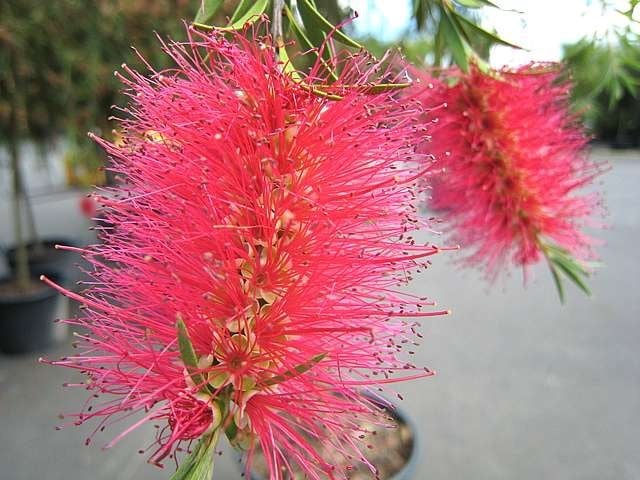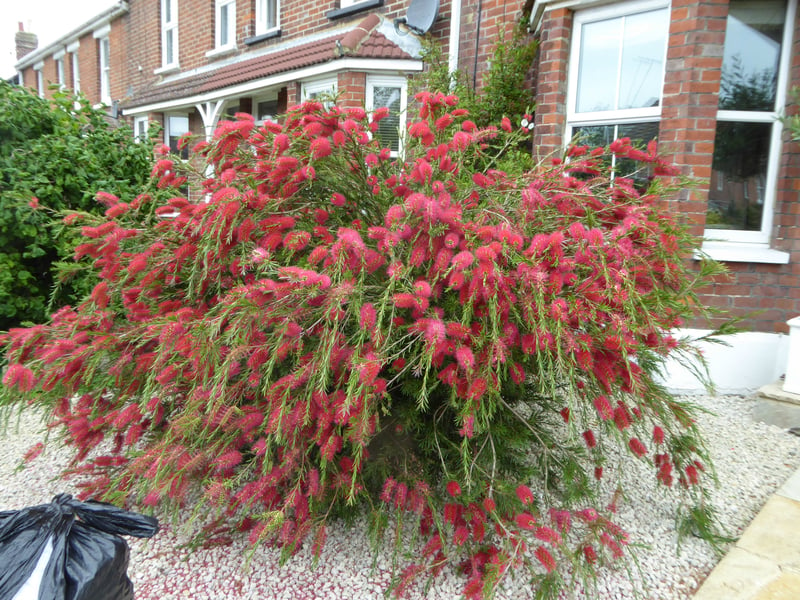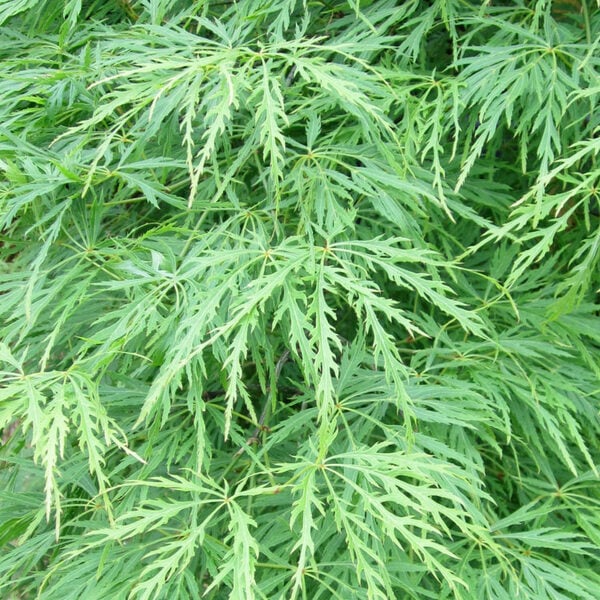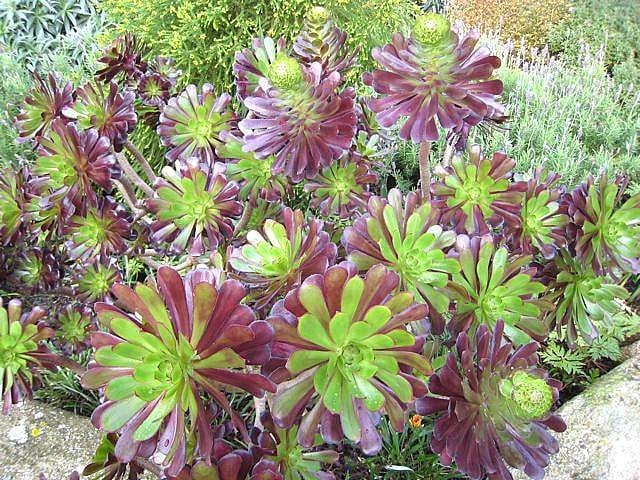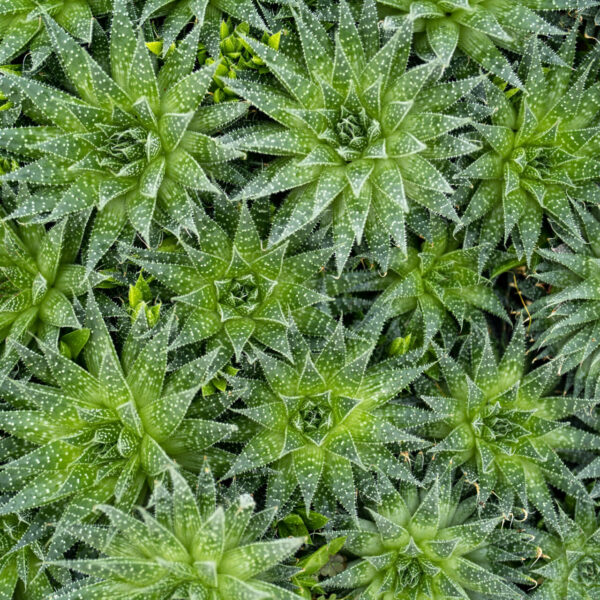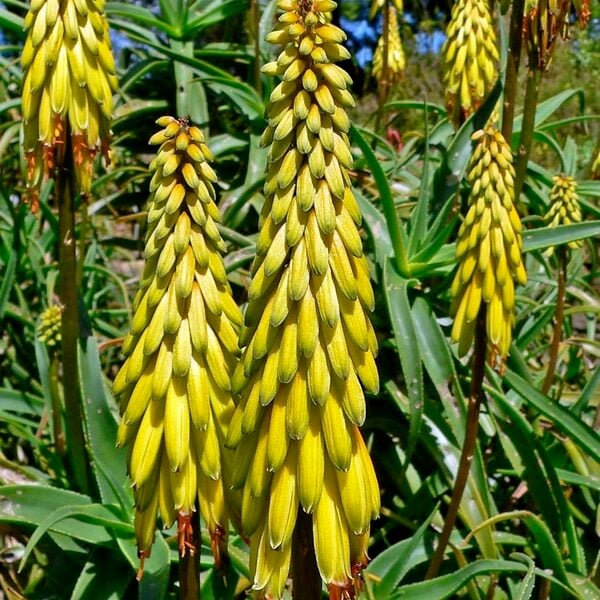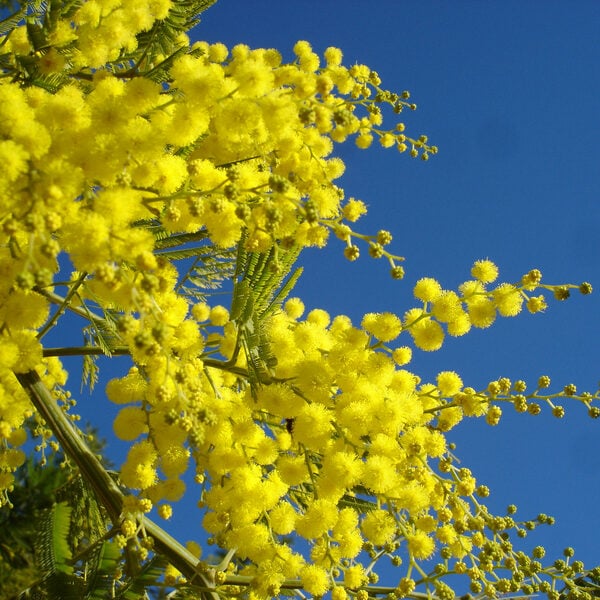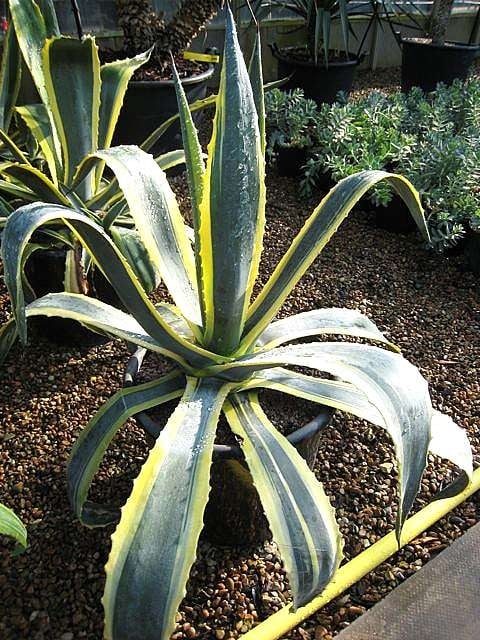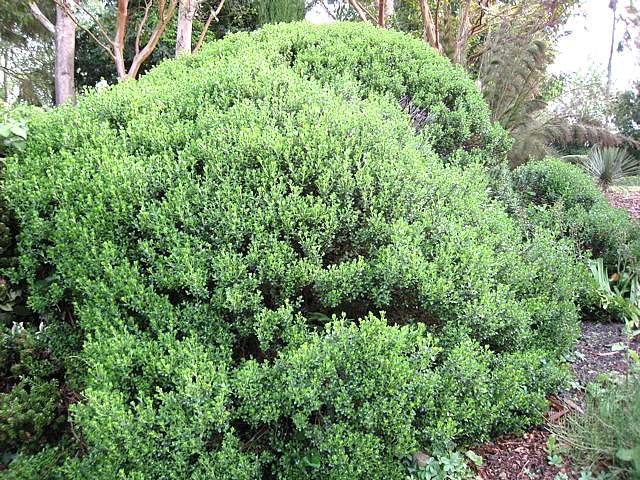Callistemon subulatus (Bottlebrush/Tina Turner)
We call them Tina Turners. Hardy, reliable, prolific flowering, slightly outrageous and very Australian. Train them as a tree or a hedge or just enjoy them as they are. Please contact us for stock availability and sizes.

Hardiness level Amber
We found this plant in the University of London Botanic College (opposite Royal Holloway College in Egham) in 1988. Callistemons have a reputation for being a bit tender and yet there it was having survived the ferociously cold winter of 1987/8 looking immaculate and with masses of strong red flowers. We took cuttings and all the 1000s of plants we've produced since then have been clones of that one plant. A good provenance. We find it easy and tough and remarkably unfussy about soil - as long as it's not too chalky. Very few Australian plants seem to like chalk. Maybe they don't do chalk in Australia.
It needs plenty of light to do its Tina Turner thing. This can be left to its own devices, trained into a little tree or even used as a hedge. It clips well, forming a nice tight hedge but you need to consider the consequences as far as flowering goes : it flowers on last year's growth so you really only want to clip it once every other year or you'll have limited flowering. Just because we're Architectural Plants doesn't mean we don't ever like flowers. In this case, they're so red and so prodigious, we like them a lot. I've seen closely related species (I can't imagine they're the same) grown as trees in the tropics and with their weeping habit and covered in red flowers, they're quite a site. Could we do the same in Sussex? Probably. It might require some pretty advanced Creative Maintenance but it's worth a try. We have some available with short trunks. That's a start.
They're also famous for their drought resistance - but this expression causes misunderstandings. Drought resistance in plants (except in Cacti) is because the plant is so vigorous, it has the ability to find water where others may not. So - very important - when first planted or if in a pot, water like mad! It may be potentially drought resistant but it's also a vigorous and therefore a thirsty plant. And remember to water the rootball, not just the surrounding soil.
The one in the picture is on the Ford road south of Arundel. The ones we planted in the garden at The Bodyshop HQ in Littlehampton in 1992 have also done exceptionally well.
Propagated by us from cuttings originally from the University of London Botanic Garden in Egham, Surrey in 1988. The entire garden seems to have disappeared.
N.B. When clipping several plants with the same tool, have a bucket containing a 5% bleach solution and swish your blades around for 30 seconds between plants to sterilise them. This will help avoid the chance of cross contamination of disease.
As with all woody plants, plant high, exposing as much of the taper at the base of the trunk as possible. Allowing soil to accumulate round the base of a tree can be fatal. Keep very well watered when first planted.
Additional Information |
|
|---|---|
| Soil Type | Clay, Dry / Well Drained, Not good on chalk (Ericaceous), Sandy, Shingle / Beach |
| Light | |
| Plant Type | |
| Continent of Origin | |
| Specialist Plants | |
| Tree Size | |
| Situation | Coastal, Exposed (To wind and sun), Mild City Gardens, Plants for Pots, Sheltered Garden |
| Flower Colour | |
| Hardiness | |




